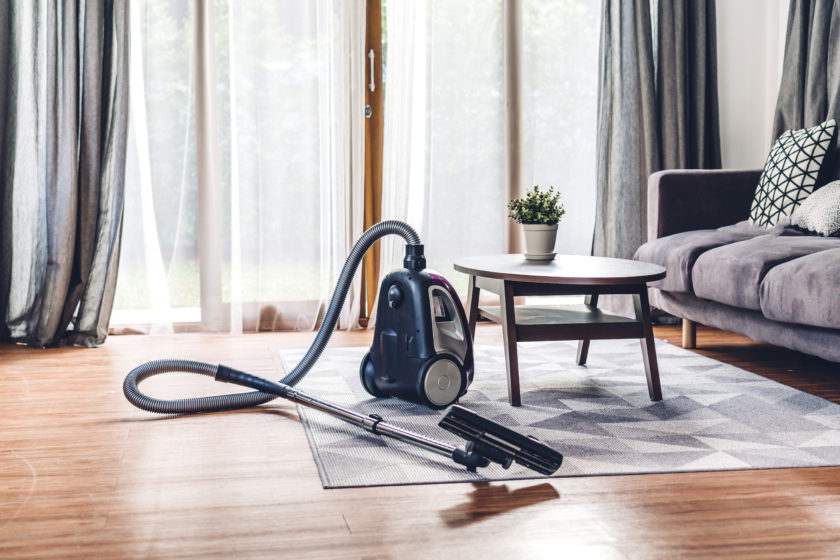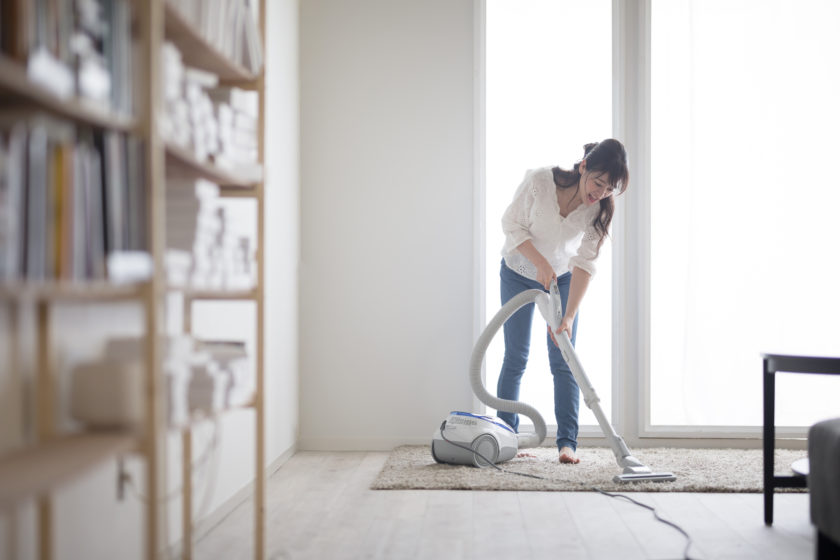For most homeowners, a vacuum filter is undoubtedly a must-have item for house cleaning. Furthermore, your filter typically gets the job done of keeping your home spotless and so we’re here to remind you how important is it is know how to clean vacuum filter to keep your machine in tip top shape.
After those dusty and dirty tasks, you might be a tad curious about how to clean a vacuum filter to keep it in tiptop condition. Given that a filthy vacuum cleaner can result in diminished air quality and loss of suction, among other issues, it’s important to clean your vacuum frequently.
In this guide, you’ll learn everything you need to know about how to clean a vacuum filter in the various models you stumble upon.
Why Should You Clean Your Vacuum Filter?
Your vacuum filters function in a fairly straightforward way. The suction unit in the machine channels the air from the hose into the dust container and out of the filter. At this point, your filter prevents debris and dust from re-entering the air. Contrarily, if it has malfunctioned, efforts to get your house spick and span by vacuuming would prove futile.
After a while, your vacuum filter inevitably becomes filthy, making it less functional and effective. Therefore, you require conducting maintenance on the filter to ensure it remains clean. At times, a filter replacement is necessary when cleaning it doesn’t make a difference.
How to Clean Vacuum Filter
Let’s delve into how to clean the different types of vacuum filters.
Foam Filters
These are found in bagless or canister vacuums. The foam filter traps the dust underneath the easy-to-empty canister. Upon removing the canister, you’ll notice the foam layer that allows air to pass through.
Although the vacuum is clean with minimal staining, it shows how the dust makes its way through the appliance. It gets contaminated with dirty air, trapping debris and dust that would otherwise make it back to the atmosphere.
To clean a foam filter, follow the steps below.
- Immerse it in water
Squeeze it for the dirt to escape the foam
Remove it from the water and leave it to air dry before you re-install it into your machine
As a tip, if you want your home to smell amazing, add a few drops of essential oil such as lemon oil, orange oil, lavender oil, lemongrass oil, tea tree, or peppermint oil, the next time your vacuum your home. Eucalyptus, lemongrass, and peppermint are a few of the oils that have antibacterial properties.
Similar to a foam filter, if your vacuum is fitted with washable disc filters, remember to clean them frequently for excellent airflow. These filters are similar to reusable coffee filters and can be attached using mounting hardware.
A Vacuum Bag
If you have an upright vacuum cleaner, it comes with a reusable or disposable bag. Cleaning or replacing the bag on a vacuum is essential to keep the motor in tiptop condition. When overfilled, the motor has to work harder to keep the vacuum cleaner running. Disposable bags require replacement before they are full. Other than that, they are fairly maintenance-free.
If a bag is reusable, remember to empty it into a large garbage can that might have dust. Tap the sides of the reusable bag to get rid of all the dust. For the best outcome, use another vacuum to eliminate dust on the interior and exterior surfaces of the bag. Your goal should be to make it look good as new every time you clean it.
A Cartridge Filter
It is round, pleated, and found in handheld and upright vacuums. Cartridge filters are typically cylinders of synthetic materials or pleated paper and are disposable but not long-lasting even with frequent cleaning. Removing the dust from the filter aids in elevating the air’s ability to pass through. If you take the time to clean the filter once you vacuum soil, sawdust, and other dry debris, you’ll notice the difference in performance after a while.
To get started, follow the process below.
- Remove the cartridge from your vacuum with little force to avoid damaging it
- Gently tip the cartridge against a hard surface like a wall to loosen the debris caught between the pleats
- If it’s been a while, you might be able to agitate the filter for longer. As you do so, you’ll notice sediment fall onto the ground
- Once the filter seems clean, you can re-install it into the vacuum. Like a reusable bag, your goal should be to get the cartridge looking good as new every time you clean it
HEPA filter
Typically, your usual filters can’t handle the micro-dust particles as their tiny size allows them to easily penetrate the sponges and fibers. Courtesy of their electrostatic field and unique micro-size fibers, the HEPA (High-Efficiency Particular Air) filter aids in the prevention of up to 99.8% of dust and dirt particles from escaping your vacuum cleaner.
Nonetheless, it’s worth keeping in mind that these are usually non-washable filters that require professional care when it comes to cleaning them. Alternatively, when you notice that your HEPA filter is filthy, we recommend investing in a new one.
FAQ
Let’s discuss the answers to some of the most commonly asked questions regarding cleaning vacuum filters.
Should you wash a vacuum filter?
If the filter is washable, run it under lukewarm water and leave it to air dry for 24 to 48 hours before re-installing it in your vacuum cleaner. Extra filters in your machine might not be washable, so it’s crucial to refer to the manufacturer’s website or user manual.
How frequently should you clean a vacuum filter?
We recommend cleaning the filter at least once per 3 months or more frequently if there’s high traffic in your home that calls for more frequent use. If you have a pleated vacuum filter that’s not washable, it’ll require replacement annually.
Should you wash a HEPA filter?
A washable HEPA filter of a vacuum cleaner should be rinsed with running cold water. However, if it’s marked as ‘permanent,’ it requires replacement with a new one as water shouldn’t be used on this type of vacuum filter.
Should you use your vacuum cleaner without the HEPA filter?
Regardless of whether you’re cleaning your entire home or a small closet, refrain from using your machine without a HEPA filter. The issue with a standard vacuum cleaner is that it spreads allergens and dust in the atmosphere rather than eliminate them, making the issue worse.
What happens if you fail to clean a vacuum filter?
Owners of vacuum cleaners empty the dirt canister but usually forget to clean the filters. Plugged filters result in an overworked motor. After a while, the motor burns out, and a new replacement costs a minimum of $150.
How can you make your vacuum filter smell great?
Insert orange or lemon peels into a new vacuum bag through the hole that connects the bag to the vacuum. If you have a bagless canister vacuum cleaner, stash the orange peel or sheet in the filter cavity. When you use the vacuum, it’ll release the fresh aroma throughout your home.
How can you dry a clean vacuum filter?
Rinse the filter under running cold water. Next, squeeze out the water and repeat the process until the water runs clear. Leave the filter to dry entirely for 24 to 48 hours before you put it back in the machine. Refrain from drying the filter using a direct heat source such as a dryer, heater, or microwave. Doing so makes it susceptible to damage and shortens its lifespan.
Bottom Line
Without maintenance, a vacuum cleaner only moves dirt and dirt around your home. Since it’s one of the most hard-working home appliances, it deserves some TLC that you can provide now that you know how to clean a vacuum filter. In turn, it will reward you with good service for years down the road.


